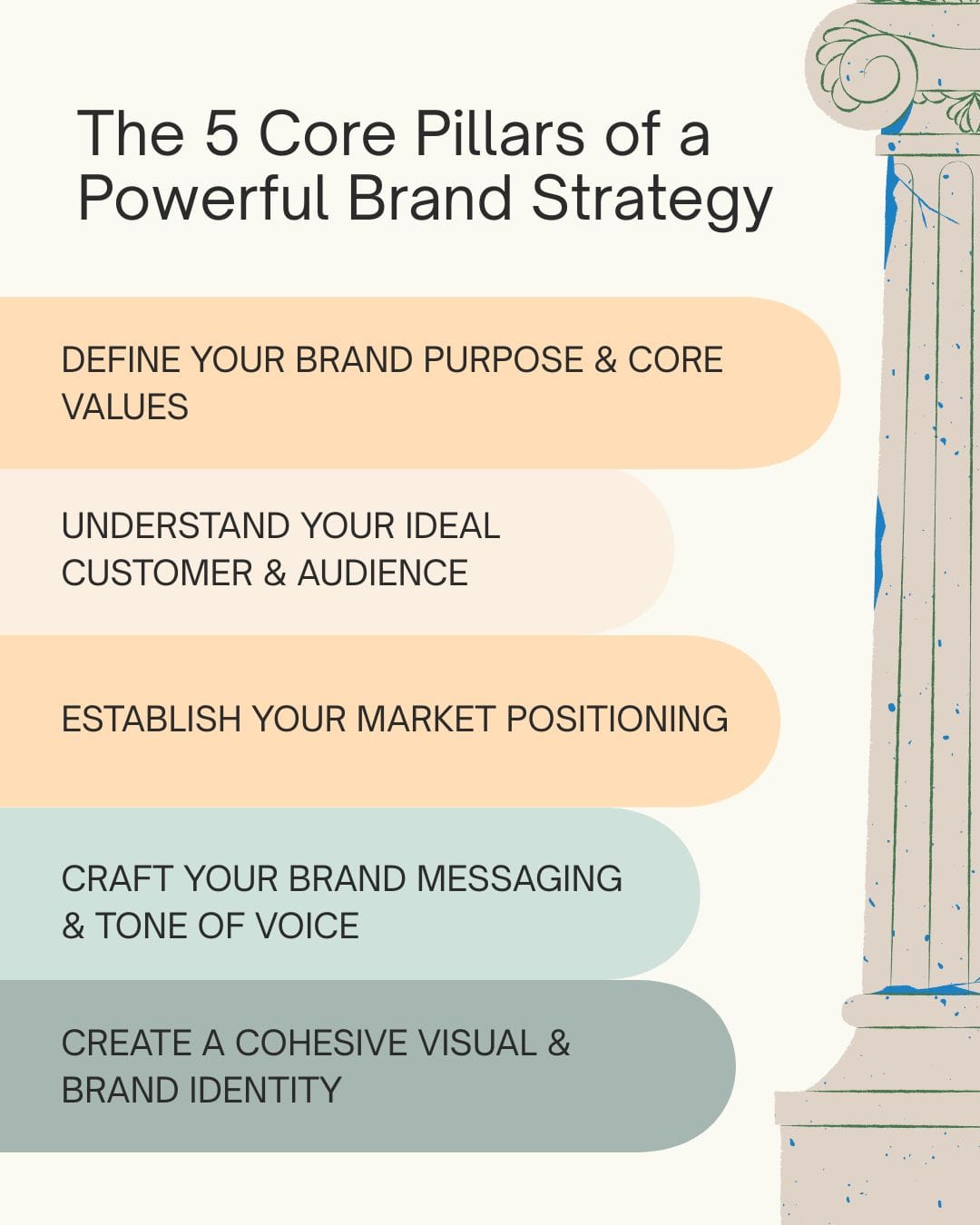A strong brand is much more than a logo or a catchy tagline. In fact, it's the foundation of your relationship with your customers. It's the feeling they have when they think of you. Ultimately, a strong brand is a critical driver of long-term, sustainable growth. While many companies focus on the visual elements, an effective brand strategy goes much deeper. It acts as a roadmap, guiding every decision you make. For example, it defines who you are, what you stand for, and it clearly answers why customers should choose you over anyone else.
At Design Infuse, we believe a brand strategy is the essential bridge that connects your business goals to your marketing execution. In other words, it’s a comprehensive plan that ensures every single customer interaction—from a social media post to a customer service call—is consistent, meaningful, and builds lasting loyalty. As a result, it helps you create a brand that people not only remember but also trust and advocate for.
What Exactly is a Brand Strategy?
Think of a brand strategy as an architectural blueprint for your business. You wouldn't build a house without a detailed plan, and you shouldn't build a brand without one either. It’s a long-term plan designed to develop a successful brand that can achieve specific business objectives. A well-defined and consistently executed strategy affects all parts of a business. Moreover, it connects directly to what consumers need, what they feel, and how you stack up against the competition. It’s the difference between a business that simply exists and a brand that truly lives.

The 5 Core Pillars of a Powerful Brand Strategy
Building a robust brand strategy involves focusing on five critical pillars. Each one builds upon the last to create a cohesive and powerful foundation.
1. Define Your Brand Purpose & Core Values First, you need to look inward. Why does your company exist beyond making a profit? This is your brand's purpose, its "why." It's the emotional core that should resonate with your target audience. Your core values are the guiding principles that stem from this purpose. They dictate your company culture and the ethical standards you uphold. For example, a core value of "innovation" means you'll constantly push boundaries, while a value of "community" means you'll prioritize customer relationships.
2. Understand Your Ideal Customer & Audience Next, you must realize that you can't be everything to everyone. The most successful brands have a crystal-clear understanding of their ideal customer. It's crucial to create an Ideal Customer Profile (ICP) by researching demographics (age, location), psychographics (values, lifestyle), pain points, and motivations. What keeps them up at night? What are their biggest aspirations? Answering these questions allows you to tailor your messaging and positioning with precision.
3. Establish Your Market Positioning Then, with a clear understanding of your audience, you must figure out where you fit in the market. Your positioning is what makes you different from your competitors. To define it, you must conduct a competitive analysis. What are your competitors doing well? Where are they falling short? Your unique value proposition (UVP) sits at the intersection of what your customer needs and what you do better than anyone else. In short, it’s the unique space you want to own in your customer's mind.
4. Craft Your Brand Messaging & Tone of Voice After that, you need to decide how you'll communicate. Develop a consistent tone of voice and a clear set of messages that convey your value proposition across all channels. Is your brand's tone professional and authoritative, or witty and informal? Your tone should be applied everywhere, from your website copy to your social media captions. This pillar includes your tagline, your value props, the stories you tell, and the language you use.
5. Create a Cohesive Visual & Brand Identity Finally, it's time for the design elements that bring your brand to life. Your visual identity is the tangible representation of all the strategic work you've done. Your logo, color palette, typography, and imagery should all work in harmony to visually express your brand's personality and values. The psychology of color, the readability of fonts, and the style of your photography all play a critical role in shaping perception.
From Strategy to Sustainable Growth
Once your brand strategy is defined, it becomes the guiding force for your entire business. For instance, it shapes your marketing campaigns, influences your product development, and sets the standard for your customer service. A strong and consistently applied brand strategy leads to increased brand recognition, improved customer loyalty, the ability to attract top talent, and the power to command premium pricing in your market.
Ready to build a brand that drives predictable revenue and creates lasting impact? Our Growth Studio specializes in developing data-driven brand strategies that set the foundation for sustainable growth.
